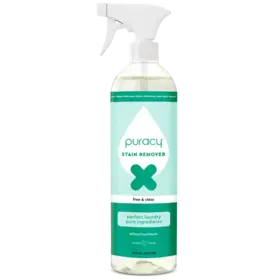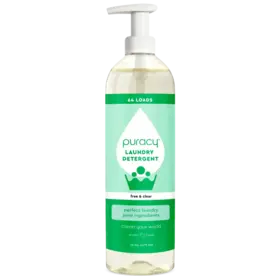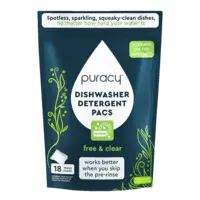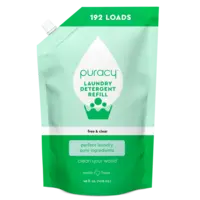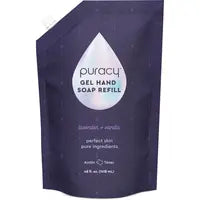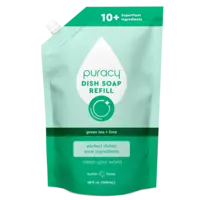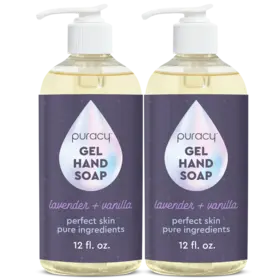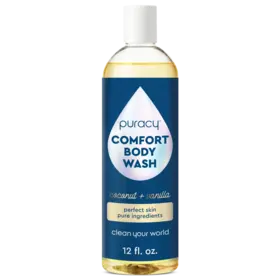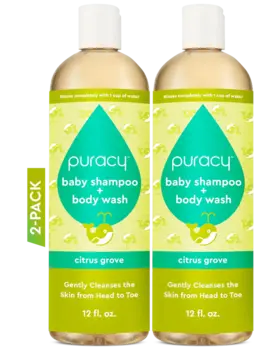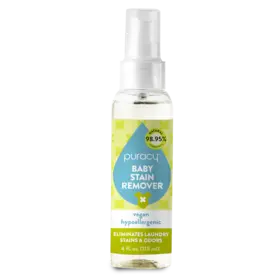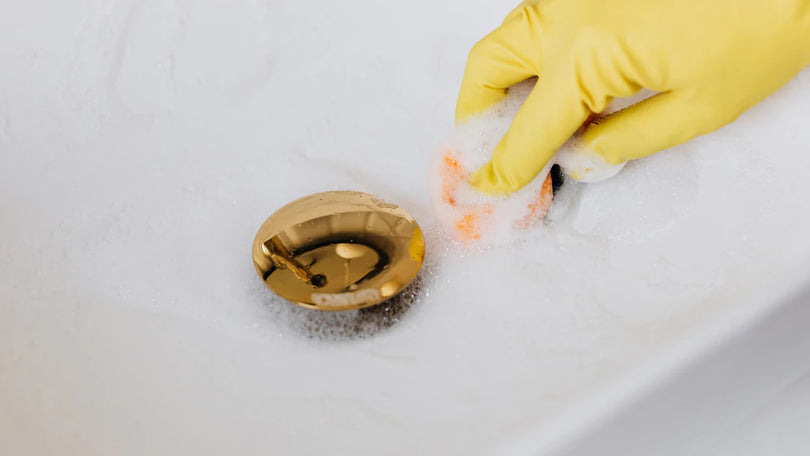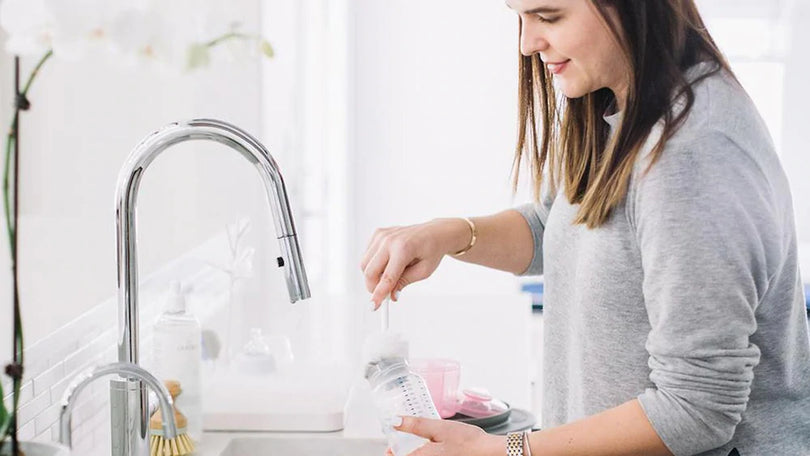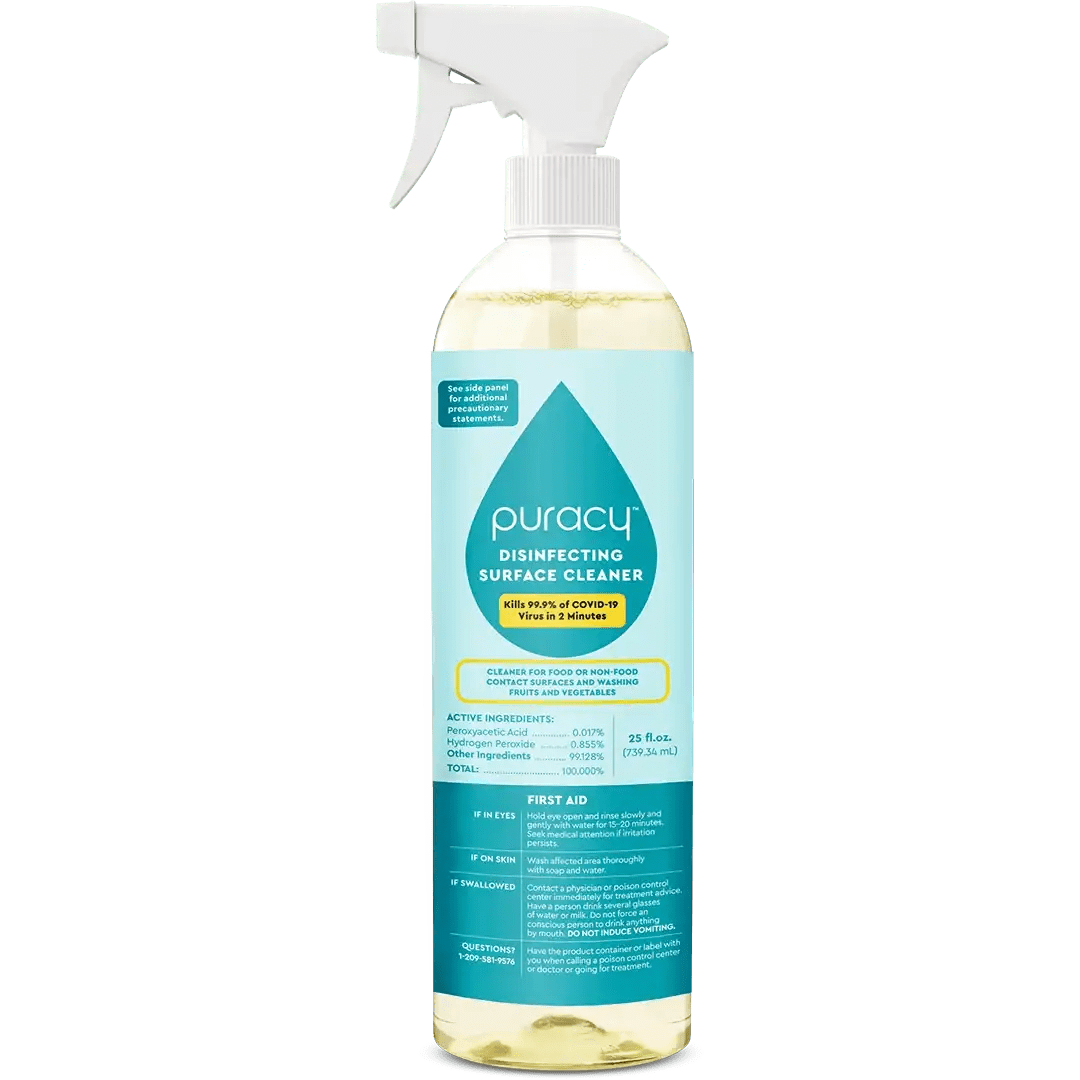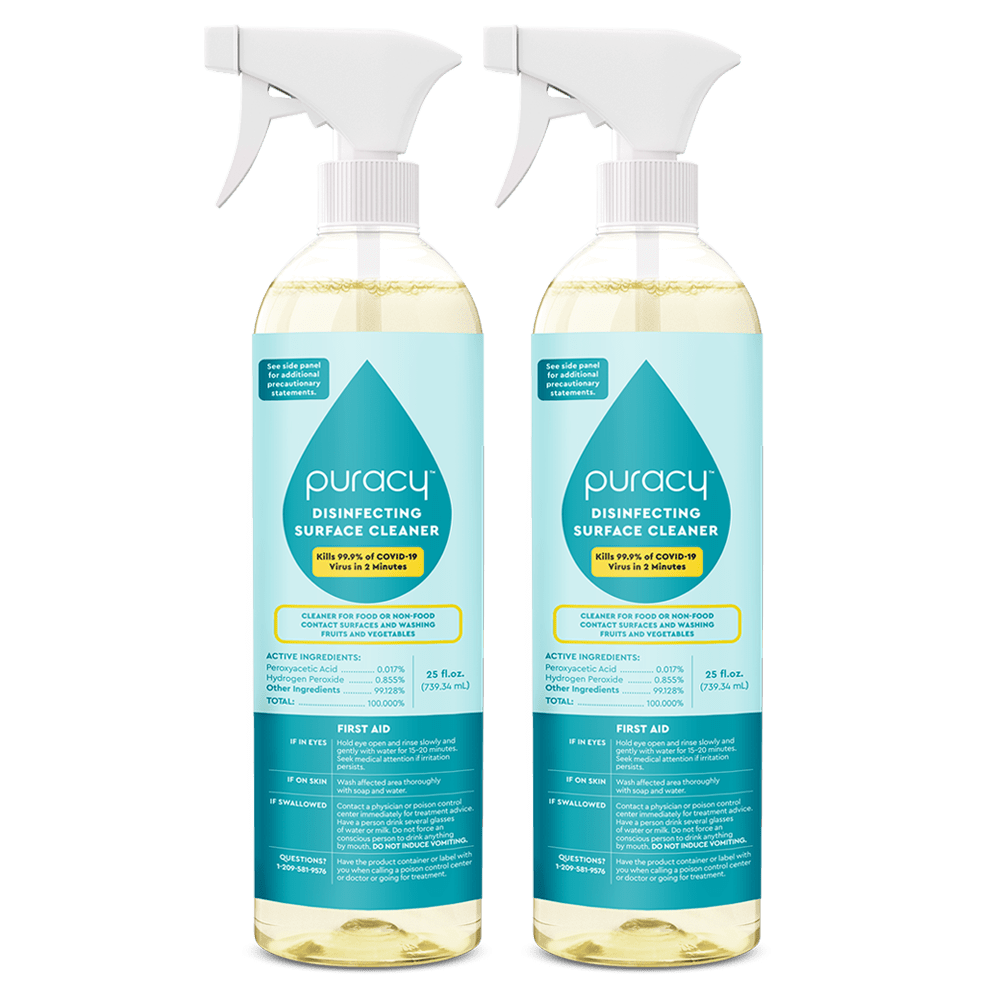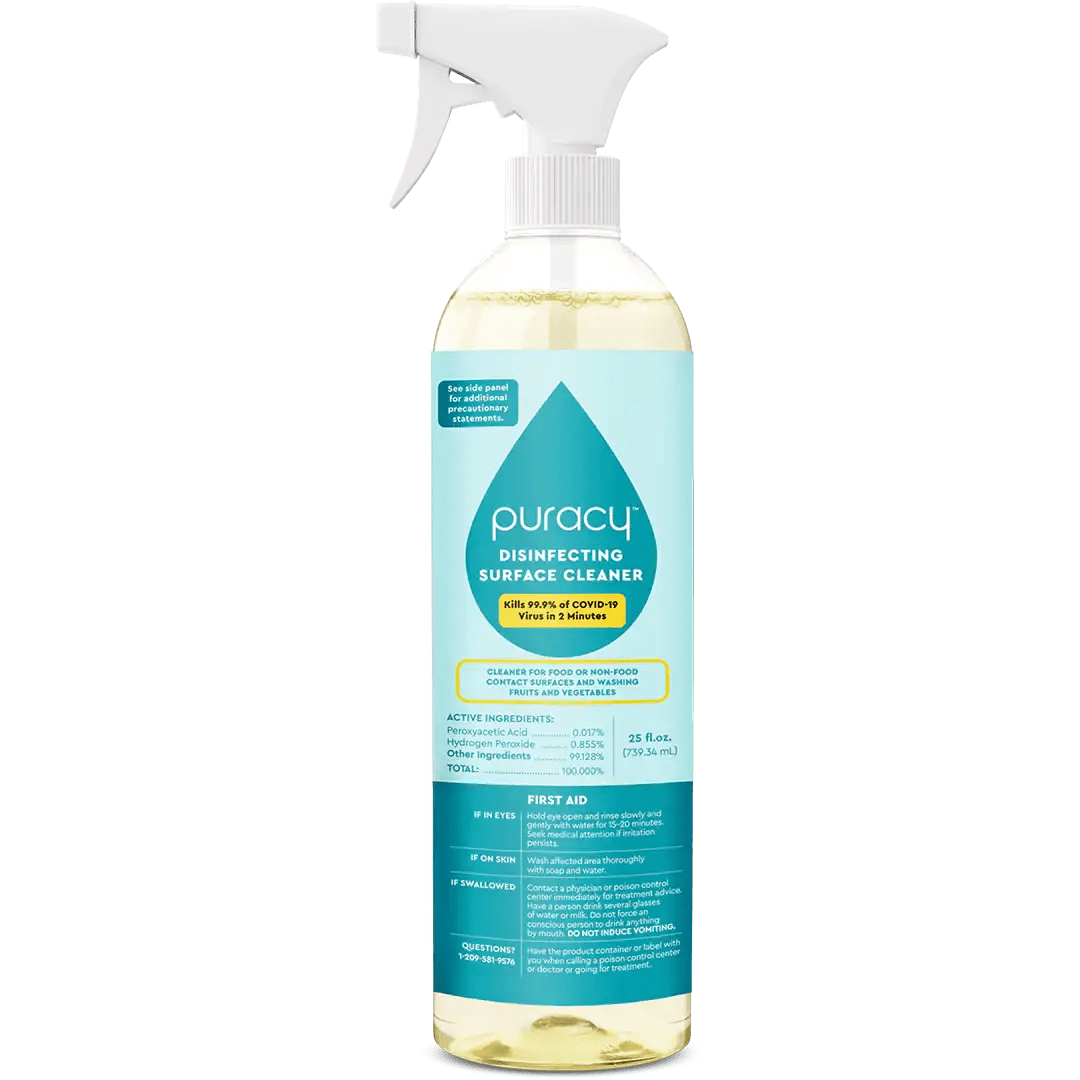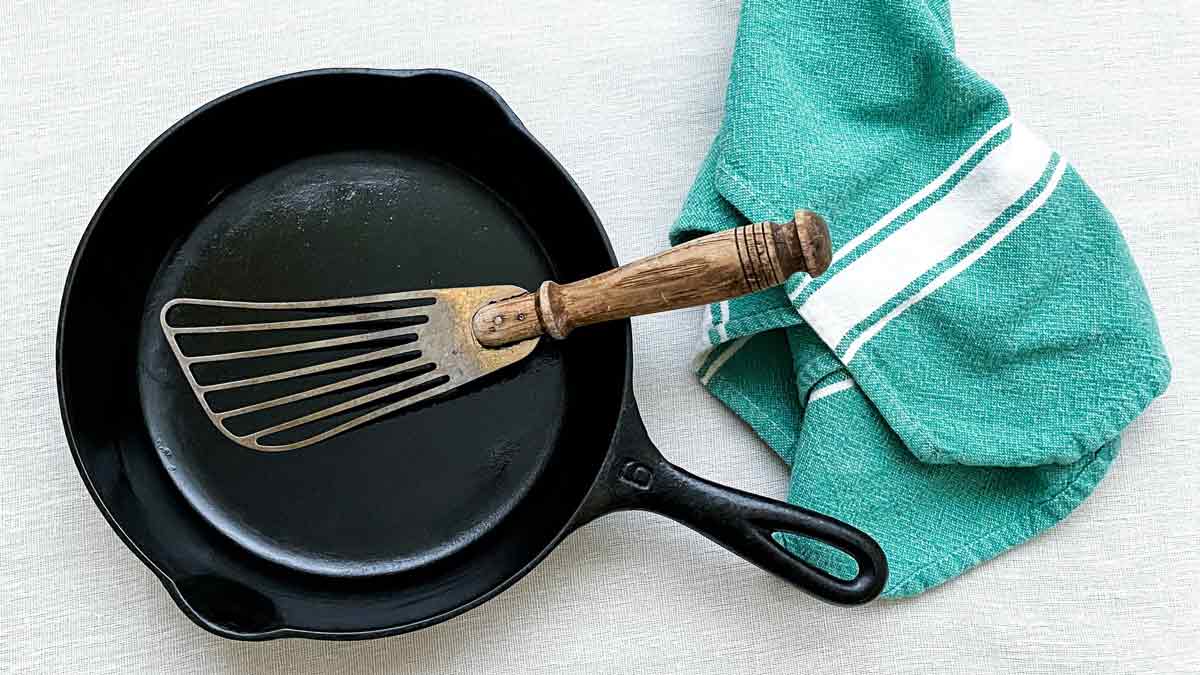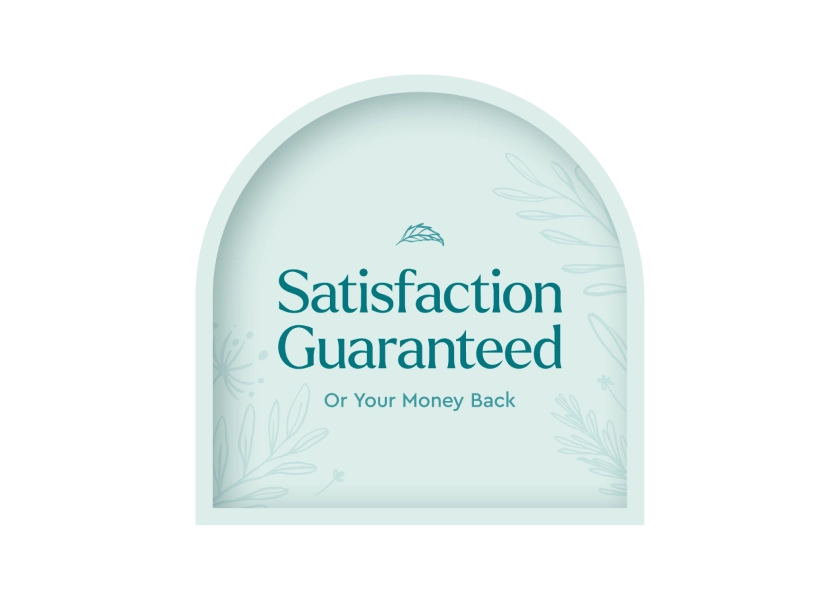From bathrooms to burp cloths, bleach is a cleaning and disinfecting “heavy-hitter” that's often used to neutralize life’s toughest messes. But the potential dangers of this compound could actually outweigh many of its benefits – especially with small children and pets at home.
If using this compound is part of your regular cleaning routine, here are a few reasons to consider swapping it for safer alternatives (that are just as effective).
What Is Bleach?

This compound is a chemical product used to remove stains and color with the use of diluted sodium hypochlorite. It's also used for sanitizing and disinfecting. Bleach is a large group of compounds that are used in a variety of ways.
Is Chlorine Bleach Toxic?

Learn whether or not this kind of compound is harmful to use in your household.
What Is Chlorine Bleach?
Sodium hypochlorite is the active ingredient in chlorine bleach and can be found in many household disinfectants. It breaks down the chemical bonds that create pigment or color and makes them non-reactive to visible light. By chemically altering the molecules in stains, they no longer reflect light the same way. This is how this compound makes white fabrics appear lighter and brighter.
When Does Chlorine Bleach Become Toxic?
The toxicity level of bleach depends on where it is applied, but generally, a safe level of concentration of chlorine bleach is between 600-800 ppm, with higher levels being dangerous to humans and animals. Chlorine bleach becomes toxic when combined with certain chemicals. Avoid mixing it with:
- Vinegar: Produces toxic chlorine gas
- Ammonia: Produces toxic chloramine vapors
- Rubbing Alcohol: Produces chloroform
Is Oxygen Bleach Toxic?

Learn more about this second type of compound, as well as how to use it safely.
What Is Oxygen Bleach?
Non-chlorine based bleach (i.e. oxygen bleach) works in a similar way to chlorine bleach. When the peroxide in oxygen bleach breaks down after water exposure, it releases free radicals that dismantle/oxidize other molecules so they become colorless.
When Does Oxygen Bleach Become Toxic?
Oxygen bleach is known as a safer alternative to chlorine bleach, and when diluted, it's even safe enough to touch (though you always have to thoroughly rinse it off). It's also considered more eco-friendly since it's septic-safe and biodegradable.
However, never mix oxygen bleach with vinegar. When combined, they create peracetic acid, which is toxic and can irritate your eyes, mouth, throat, and nose.
What Is Bleach Used For & How Does Bleach Exposure Happen?

Chlorine bleach has antimicrobial properties. Hypochlorous acid in chlorine bleach disrupts bacteria proteins until they become ineffective – similar to how hypochlorous acid in our immune cells target viruses.
When it comes to removing stains, oxygen bleach isn’t as powerful as chlorine bleach, but it is gentler on fabrics. The hydrogen peroxide within oxygen bleach also kills viruses, mold and bacteria.
Bleach Exposure
This compound has been a staple in many household cupboards for generations. But bleach toxicity does carry some risk – especially if you have young children and pets in your home.
“In a study published in the Journal of Pediatrics, over a 16-year period, more than 250,000 children under 5 were rushed to the ER for household cleaner exposure.”
– Board-Certified Pediatrician Dr. Ryan Blackman
Dr. Blackman continues: “The most common exposure was bleach, either through ingestion or spray bottle accidents. Children under 3 were found to be particularly at risk. Keeping this compound and other dangerous chemicals out of your household – and out of reach of children – is smart planning for parents with young children.”
Why You Don’t Need Chlorine Bleach for a Cleaner Home

With all of the possible risks of using this compound, learn why it makes sense to consider using safer cleaning products.
The Dangers of Using Bleach at Home
Aside from household cleaning substances being one of the top commonly ingested poisons by small children and animals, this compound can be especially dangerous for many other reasons.
-
Respiratory Issues
This compound can also be dangerous to those with respiratory diseases such as asthma or pneumonia. Prolonged exposure to this compound can contribute to chronic respiratory problems, as well as headaches and allergic reactions.
-
Irritation to Mucous Membranes
Due to its corrosive nature, prolonged exposure to this compound can cause damage to mucous membranes, particularly around your mouth, nose, and lungs. You can protect yourself from this exposure by wearing protective gear when using this compound, such as gloves, face masks, and goggles.
-
Effects of Bleach on the Human Microbiome
A diverse microbiome helps to support our immune system and produce essential vitamins our body uses to function well. Poor diets, antibiotics, and the overuse of disinfectants are a few reasons that we have less contact with these important microbes.
This compound might impact the human microbiome, or the “good” microorganisms which live in (and on) our bodies in perfect harmony. These bacteria, fungi, and viruses actually help us stay healthy in a variety of ways. Researchers are exploring the concept of compromised microbiomes leading to health conditions including allergies, celiac disease, inflammatory diseases, and obesity.
-
Toxic Inhalation
This compound can have an adverse effect on pets, particularly when an animal inhales an excessive amount of the chemical. Bleach poisoning through inhalation can cause damage to gastrointestinal tracts, as well as pneumonia and kidney damage.
The Environmental Effects of Bleach
This compound also has a considerable impact on the environment, leaving effects on water supply, vegetation, and more.
-
Air Pollution
In your home, excessive amounts of this compound can result in a dangerous environment for humans and animals. On a larger scale, chemical factory outputs that manufacture this compound also contribute to air pollution.
-
Hazardous Runoff
This compound can make its way to our water supply and combine with other elements to create potentially dangerous mixtures. This hazardous runoff can also have an adverse effect on the local wildlife if it’s not closely monitored.
When Should I Use Bleach?

Discover ways you can safely use this compound in your household.
-
Stain Removal and Clothes Whitening
When used safely, this compound can tackle laundry stains and whiten clothes. Always check a garment's label to ensure it can be washed using household bleach. Certain fabrics, such as silk and wool, or finishes, such as flame-retardant clothes, may not be suitable to be washed with this compound.
-
Disinfection and Sanitization
This compound is commonly used to kill germs, but before doing so, carefully check the label's directions to ensure you are using a product correctly. Look for products that are registered by the EPA and are safe to be used at home. This compound can be used to disinfect the following:
- White towels that have become moldy and mildewy
- Pool systems
- Mold remediation
- Disinfectant (if you’ve run out of your usual one)
Natural Alternatives to Bleach

Want to skip this compound altogether? Here are some natural alternatives to use instead.
-
Vinegar
If you're looking to whiten clothes, you can opt for vinegar instead. Presoak the item in distilled white vinegar and warm water for best results.
-
Baking Soda
If you need an extra hand when it comes to sanitizing, this alternative provides mild abrasion for more cleaning power.
-
Dry Steam Vapor
You can use a dry vapor steam cleaner to wield super-heated low moisture steam to clean and disinfect surfaces. This is safe to inhale and doesn't require any chemicals.
Treatment and Management of Bleach Exposure

If you find yourself exposed to a dangerous amount of this compound, here are tips for treating and managing the exposure.
-
Immediate Treatment
If your eyes or skin have been exposed, immediately flush and wash them with clean water. If your mouth, stomach, or throat have been exposed, drink plenty of water.
-
Hospital Treatment
The most effective treatment for chlorine bleach exposure involves getting the chlorine out of the body as quickly as possible. (However, never induce vomiting to attempt to do this.) This means getting to a hospital and being seen by trained emergency personnel.
The Dangers of Combining Bleach with Other Chemicals

This compound is highly-reactive. When combined with other chemicals found in many household cleaners, the results can be extremely serious. Be aware of ingredients found in your cleaning products: Inadvertently mixing them can be dangerous.
-
Bleach and Ammonia
When the sodium hypochlorite in chlorine bleach is mixed with ammonia, it produces toxic chlorine gas, which can lead to:
- Coughing and shortness of breath
- Chest pain and wheezing
- Eye, nose, and throat irritation
- Nausea
- Pneumonia
- Death
Ammonia is commonly found in glass cleaners, paints, as well as human and animal urine. Therefore, avoid using this compound to clean litter boxes and diaper pails.
-
Bleach and Acids
Many common household cleaning products contain acids, including glass cleaners, dishwasher detergents, drain cleaners, and toilet cleaners. Mixing these products with this compound can release chlorine gas which can cause:
- Breathing problems
- Chest pain
- Coughing
- Eye, nose, and throat irritation
- Pneumonia
- Vomiting
- Death
-
Bleach and Alcohol
By mixing alcohol and chlorine bleach, you risk creating chloroform and hydrochloric acid. Chloroform irritates the eyes and skin and can cause serious damage to the nervous system and bodily organs. At certain levels, it acts as a sedative, causing a person to pass out. Sudden, fatal cardiac arrhythmia has also been linked to chloroform exposure. If you suspect chloroform exposure, immediately leave the contaminated area and seek medical attention.
-
Hydrochloric Acid
Hydrochloric acid is highly toxic to humans and exposure can cause a host of serious health problems, depending on the type of exposure (e.g. skin contact, inhalation, ingestion). The most concerning side effects include damage to mucous membranes, severe chemical burns, and pulmonary edema.
Is Puracy Disinfecting Cleaner Safe?

Puracy prides itself on being totally transparent about its ingredients. So how does Puracy Disinfecting Surface Cleaner's safety record stack up against bleach?
-
Skin
This product isn’t a known skin irritant, but certain individuals may experience irritation or itching. Simply rinse with lukewarm water for five minutes (or until the product is flushed away).
-
Eyes
If this cleaner gets sprayed directly into the eyes, it may cause stinging, itching, or irritation. Remove contacts (if present) and apply flowing, lukewarm water for 15 minutes while holding eyelids open.
-
Ingestion
Health injuries are not expected if this product is ingested. Do not induce vomiting and ensure that the person drinks large amounts of water. If vomiting occurs, contact poison control or seek medical attention.
-
Inhalation
Though no health symptoms are expected from inhalation, seek medical attention if you are concerned or feel unwell.
The Benefits of Using Puracy Disinfecting Surface Cleaner

Our hydrogen peroxide-based cleaner a great bleach replacement – and it does things that this compound simply can’t:
-
It's Safe for Greywater and Septic Systems
Our hydrogen peroxide disinfectant is biodegradable and designed to be used in homes with greywater and septic systems.
-
It Can Be Used as a Food Wash
Due to its gentle, biodegradable formula, our product has been approved for use as a food wash in organic food kitchens. Spray fruits and vegetables, let the product sit for a minute, and your food is safe to eat (rinsing is optional).
-
It Can Be Safely Combined with Any Puracy Cleaner
We’ve designed our disinfecting spray as an incredibly effective cleaner and disinfectant – and you won’t have to worry about mixing two reactive chemical formulas. Use the entire range of Puracy cleaning products without the risk of adverse reactions (like toxic gasses).
Choose Puracy Products for a Cleaner Home

At Puracy, we’re always looking for new ways to make life easier and safer. With all of our home, personal care, baby, and pet products, you’ll never have to worry about exposing your loved ones to toxic chemicals. We’re so confident that you’ll love our products, we offer a 100% Pure Love Guarantee.

